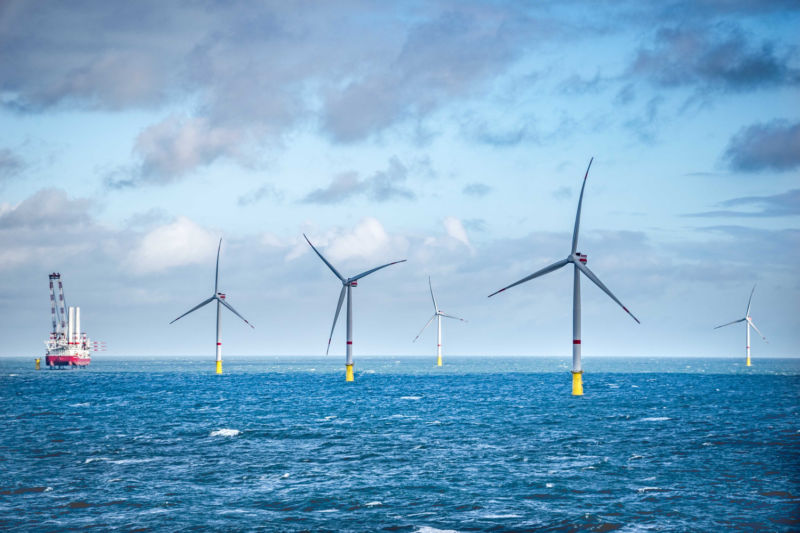

reader comments
294 with 89 posters participating
Last May, Massachusetts chose companies representing a project called Vineyard Wind to negotiate long-term contracts for an 800 megawatt (MW) offshore wind project that would serve some 400,000 homes. This month, the state approved the negotiated contracts, clearing the way for Vineyard Wind to become the second (and the biggest) offshore wind farm in the United States.
The approval also included a promise from Vineyard Wind to invest $15 million to a fund that will “promote the use of battery storage in low-income communities” and “further the development of energy storage systems across the state.”
There’s a lot of untapped potential for offshore wind in the US. Currently, the nation only has one offshore wind farm: a 30MW site off of Rhode Island. But in places like Europe, offshore wind makes a significant contribution to energy generation, and the technology is maturing quickly there, with costs falling in tandem.
The advantage of offshore wind is that gusts are often stronger and more consistent when they’re several miles out at sea. But building turbines out at sea has been historically cost-prohibitive, especially on the West Coast where waters are too deep to anchor the turbines into the sea floor. (A floating offshore wind farm in Scotland has tackled this problem, and the technology is expected to make its US debut in about a decade.)
According to Utility Dive, Vineyard Wind’s contracts sell energy to utilities at an average rate of $0.089 per kilowatt-hour (kWh). The averaging occurs between two phases of the project. The cheaper phase, Ars previously reported, would sell energy at $0.065 per kWh. Utility Dive reports that subsequent offshore wind projects will be required to beat Vineyard Wind’s low price in subsequent contract bids, per Massachusetts law.
According to Vineyard Wind’s website, the project is slated to start onshore construction of facilities this year.


